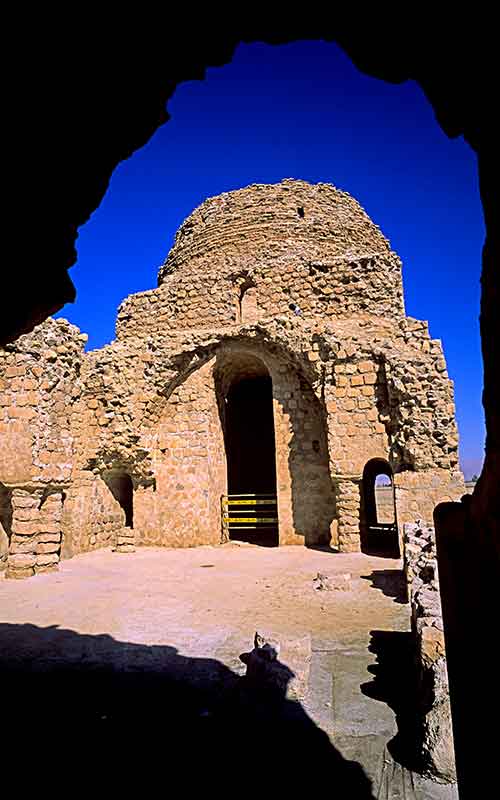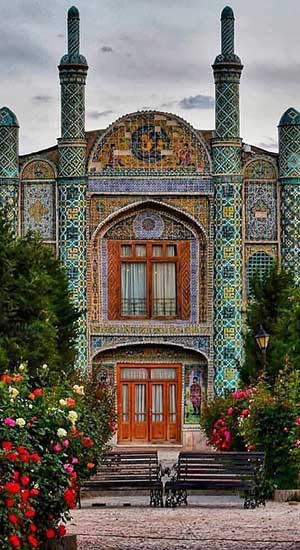NORTH KHORASAN PROVINCE
BOJNORD CITY
The small Paris in Iran
8 NORTH KHORASAN MOST POPULAR CITIES
| Rank | City | Population |
|---|---|---|
| 1 | Bojnord County | 324,083 |
| 2 | Esfarayen County | 120,513 |
| 3 | Faruj County | 49,271 |
| 4 | Garmeh County | 25,475 |
| 5 | Jajarm County | 36,673 |
| 6 | Maneh and Samalqan County | 101,727 |
| 7 | Raz and Jargalan County | 59,210 |
| 8 | Shirvan County | 146,140 |

A Brief History
Herat experienced a period of independence in 1824 when the Afghan Empire was divided between the Durranis and Barakzais. In 1837, the city was under siege by the Persians, but the British helped the Afghans fend them off. Another Persian assault in 1856 resulted in a brief Persian victory over the city and the start of the Anglo-Persian War. After the Treaty of Paris was signed in 1857, hostilities between the Persians and the British came to an end, and the Persian troops left Herat. In 1863, two weeks before Dost Muhammad Khan's passing, Afghanistan retook Herat.
Before it was split into three provinces on September 29, 2004, Khorasan was the largest province in Iran. Razavi Khorasan, North Khorasan, and South Khorasan were the provinces that received approval from the Iranian parliament (on May 18, 2004).
Climate and weather
North Khorasan experiences hot, dry, clear summers and very cold, snowy, partly overcast winters. The average annual temperature fluctuates between 24- and 90 degrees Fahrenheit, rarely falling below 14 or rising over 97.
When to Go to North Khorasan?
The best time of year to visit Bojnourd for hot-weather activities is from September to February.
Recommended month for traveling to North Khorasan Province
OCTOBER

Where to Go in North Khorasan?
Bojnourd
Bojnord is the capital of North Khorasan province. A beautiful and vast city that is located in a mountainous area and has a mild mountainous climate. Bojnord is one of those cities in the vast area of Khorasan that has a green and attractive nature and attracts the eyes of many. Kepe Dagh and Aladagh surround this beautiful city from two sides, and a huge part of the city is located in the border river valley of Etrak, which is the reason for the eye-catching greenery of Bojnord. Bojnord is located in the neighboring country of Turkmenistan, it was also inhabited in the prehistoric period, but the exact foundation of this beautiful city goes back to 1100 A.H. According to historical documents, a person named Vali Khan II, who was one of the elders of the famous Shadlo Bojnoord clan, founded this city. Years later, the city was severely damaged during the rebellion and once again during the bloody attack of the Mongols. In historical sources, this city is also mentioned with names such as Bijan Gard, and many consider Bojnord to be a modified form of the same name. Baba Aman beauty resort, Bash Qardash resort, luxurious Qajar mansion, and anthropology museum, Ayanekhane, Hosseiniyeh Jajermiha, Imamzade Seyyed Abbas, and Dara Bagh are only some of the well-known attractions of Bojnord.
Shirvan
The second largest city in North Khorasan province is Shirvan city. Shirvan, which borders Bojnord on its southern side and Turkmenistan on its northern side, is located at a distance of 52 km from Bojnord city. Just like Bojnoord, Shirvan is located in the fertile valley of the Atrak River and the vicinity of Aladagh and Kepe Dagh, but compared to Bojnoord, it has a milder climate and a greener nature. The edge of the Etrak River was one of the favorite places for humans to live in prehistoric times, that's why many historical hills around this historical city show the long history of this land. Some believe that human habitation in this area is almost six thousand years old. In addition to the prehistoric era, the city also enjoyed high prosperity in periods such as the Sassanid era, and the remains of castles and monuments from that era can be seen in abundance. Shirvan is now one of the lesser-known cities in the country, but this city is full of spectacular and attractive treasures, such as beautiful and eye-catching villas, unique villages, and many ancient monuments. Among the beauties of Shirvan, we can mention Arg Naderi hill, Galil tourism border area, Astrakhi waterfall, Hanameh caves, Astrakhi village and old tree, Zovarem valley, Zo castle, and Oghaz.
Faroj
Many people know Faruj by his famous name Ajil. A city that has been known as the nut capital of Iran among tourists for several years. Faruj is located 90 kilometers from Bojnord city in the neighborhood of Shirvan and Qochan and on one side it reaches the Bajgiran border region on the border of Turkmenistan. According to the findings of archaeologists and historical sources around Faruj, it was one of the centers of the Parthian government, which shows the long history of this region. Faruj, however, with its location in the Etrak river valley and the neighborhood of Kepe Dagh and Aladagh, has large fields and numerous gardens. In recent years, the fate of Faruj is tied to nuts, and many pilgrims and travelers of Mashhad make sure to visit Faruj in order not to miss out on the quality nuts of this city.
Nuts are produced in the cities around Faruj, but the market for selling them in this city is booming so most of the nut shops in this city are open to travelers and buyers 24 hours a day. According to some historians and archaeologists, this city was built about a thousand years ago by a person named Farajullah, who was Harun Abbasi's representative in Iran. It also has many tourist attractions. According to this theory, the name of the city was Faraj Allah, which was later changed to Faraj. Tomb of Baba and Bibi, the historical and beautiful village of Ostad, Masjid Jame Faruj, Ali Abad Castle, Khosroviye tourist village, Esfjir waterfall, natural glaciers of Taberyan and many fruit orchards and fields, and green plains of Faruj are among the attractions of this beautiful and busy city.
Jajarm
Jajarm is another city of North Khorasan province, which is the center of the beautiful city of Jajarm. Jajarm is located just 150 km away from Bojnord city and was once on the important and busy route of the Silk Road. Many hub caravans have passed through this beautiful city on their way throughout history. Jajarm is also one of the most historical cities in North Khorasan province, and as can be seen from the buildings and historical documents, it was very prosperous and important during the Parthian and Sassanid periods, although the explored historical sites of Jajarm city have been found traces of the Neolithic and Bronze Age. They show Until this period, Jajarm was one of the cities with high traffic and caravans, but with the construction of new routes, the many caravanserais in Jajarm gradually fell into disrepair and were destroyed over time. However, compared to other neighboring cities, Jajarm has a dry and semi-desert nature. Saluk mountain is the highest height in this region and the river Kalshur also passes near it and finally flows into the southern desert. But with the help of its long history, Jajarm is full of fascinating and surprising historical attractions. Jajarm Jame Mosque, Khwaja Ali Bin Mehziar Tomb, Qazlar Qala, Djerbat rock carvings, Bani Hashem Palace, Garmabeh Bath and Museum Jajarm, Mian Dasht Protected Area, Prince Darband, Bahar Mountain and Rabat Qoli are only part of Jajarm's tourist attractions.
Top Dishes in North Khorasan
Ash Yarme
Yarmeh soup is a type of local soup in Bojnord, which is often prepared with a kind of mountain vegetable called "cherish" that grows in the mountains in spring. This soup can be made with spinach and its ingredients are wheat semolina, chickpeas, buttermilk, onion, and dry mint.
Ghotab bread
As mentioned, Cherish is one of Bojnord's local vegetables in spring, which is present in many of their recipes; The main ingredients of local Ghotab bread are this type of vegetable, which, along with potatoes, lentils and rice, along with a small number of spices, make up the ingredients of this bread.
Shole Mash
Shole Mash is a Bojnordi dish that is simple but nutritious and its preparation is very easy. The ingredients needed to prepare this soup are mung beans, rice, grilled meat, fried onion, and spices along with a little cumin. This soup is usually made a little spicy.
Ghoroto Bjnournd
Qoruto or Ab Kashk is another local food of Bojnord, which is prepared from curd, yogurt, chopped walnuts, chopped vegetables consisting of leek, parsley and tarragon, licorice, and a little spice, salt, and turmeric. Qoruto can be eaten like broth with pieces of bread or drunk as soup. The local people of Bojnord are very fond of this dish and it can be seen on their tables several times a month.
Ash Qalieh
"Qalieh" soup is one of the most traditional dishes of Bojnord, which is served with curd or paste according to taste. This soup is another local soup of Bojnord, which is hundreds of years old and is one of the oldest local dishes of Bojnord. This delicious soup is prepared from minced meat, lentils, white beans, pinto beans, noodles, chickpeas, fried onion, curd, yogurt, and a little spice. This soup is served with curd or tomato paste according to tomato taste.
Ojez
Ojez is the Turkish name of Ashkeneh. This dish is prepared in Bojnoord on cold autumn and winter nights instead of soup. This food is very easy and is prepared from ingredients such as butter, onion, flour, eggs, salt, and spices, and it is considered an economic food. It takes a little time to prepare and can be eaten with bread.
Ash Jashvareh
Jashwarah soup is similar to Italian ravioli. This local dish does not look like soup, and it is interesting to know that it is similar to one of the Italian dishes called ravioli. For this dish, minced meat, lentils, spinach, salt, and turmeric are roasted and placed in a locally made dough, such as dumplings. Dumplings are boiled in boiling water, then served with fried onion and spinach sauce.
Dani
Danny and Dime Danny are two local dishes of Bojnoord that are prepared for two different events. Dime Dani, which is known as Imam's soup, is cooked on the Day of Ashura. The difference between the two is in the type of wheat that is used. Whole wheat is used in Dani and half-shelled wheat is used in Semi-Dani.
Ghabli
Ghabli is a type of Bojnordi rice that is mostly prepared in the cold season. Its ingredients are minced meat in the form of small meatballs, pitted dates, rice noodles, pinto beans, rice, tomato paste, fried onions, and spices. This dish is also prepared with different ingredients in other cities of Iran such as Tabriz.
Top Souvenirs of North Khorasan
Bjnourdi candy
Bojnord, the center of North Khorasan province, has been known for many years for its special souvenir, candy, which is also known as sugar cheese. This candy is made from sugar-stretched dough that makes its color white.
Ghareh Gorout
Qaraqrout is a mostly black dairy product and, in some cases, brown and sometimes yellow or white, which has a sweet and sour taste and is made from buttermilk or yogurt. Qaraqrout is considered one of the most famous souvenirs of North Khorasan province.
Curd
Kashk is another local and traditional souvenir of North Khorasan province, which is prepared by boiling yogurt. Kashk has a very high calcium content and has won the satisfaction of consumers with its unique taste.
Ghotlame bread
Ghotlameh bread is one of the souvenirs of North Khorasan province, It is a sweet bread that is mainly baked in Shirvan, Bojnord, and Qochan, and it is one of the traditional and local breads of these cities. This bread is prepared from white flour dough with butter and turmeric.
Rugs
The fibers used in the carpet are mostly natural and are mostly used as decoration. The traditional culture and natural geographical region of this province influence the design of carpets produced in North Khorasan province. In most of the villages of North Khorasan province, weavers no longer use maps when weaving carpets and use their mental motifs, which are more diverse.
